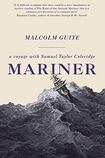
The Romantic poets liked to make grand claims for the prophetic power of their craft. In the peroration to his essay A Defence of Poetry, Percy Bysshe Shelley wrote that "poets are the hierophants of an unapprehended inspiration, the mirrors of the gigantic shadows which futurity casts upon the present". And in his Biographia Literaria, Samuel Taylor Coleridge argued that the poet, probably while sequestered in a garret, cultivating his "philosophic imagination" and indulging in edifying breakfasts of six fried eggs and a couple of glasses of laudanum ("large"), was capable of opening spaces in the future into which he might later travel and grow – much as "the chrysalis of the horned fly [leaves] room in its involucrum for antennae yet to come".
Poets, observed Coleridge, “know and feel, that the potential works in them, even as the actual works on them”.
In this bizarre and self-indulgent book about the relationship between Coleridge's life and best-known poem, The Rime of the Ancient Mariner (1798; revised 1817), Malcolm Guite follows his Romantic predecessors in granting poetry a peculiar quality of prescience. He believes that, when read with sufficient attention, we can see in Coleridge's seven-part poem a prediction of the major events and struggles that were to characterise his later life.
Opium addiction
Like his mariner, Coleridge (1772-1834) sailed away from home and all that was familiar: outwardly in his life-changing voyages to Germany and Malta, and inwardly in his journey deep into the nightmare of opium addiction and high into the rarefied regions of metaphysical speculation.
Also like his mariner, Coleridge endured the agony of loneliness, despair and suicidal thoughts, but also, like him, he survived the ordeal, was rewarded with a visionary experience of transfigured beauty in the world, and returned from his voyage into extremity with a new sense of purpose. He became, like his mariner, a life-transforming teacher, sharing a spiritual vision that linked love and prayer with a new humility towards God and nature.
In addition to yielding such striking instances of vague similarity, Guite thinks that when we read The Rime with even greater attention (or, in his annoying phrase, "if we can learn to read it") it will supply us with "a chart that maps both our souls and our world"; "a prophetic ecological warning"; a "profound exploration of the human condition, of our fallenness" and our "human evil". Crikey.
From this it will be clear that Guite – a poet, a theologian and the chaplain of Girton College, Cambridge – is not just a pretty committed believer, but also one who assumes his readers are too: there is a particularly irritating moment at which he writes that “as we find the purely material and mechanical modes of reality less and less adequate to our experience” – speak for yourself – “we may find in Coleridge’s writings essential guides for the seas we have to navigate in the ‘post-modern’ era”.
Gloomy Anglican
Accordingly, the Coleridge we get in this book is the Coleridge Guite likes best: not the opium addict or the young Unitarian who in 1798 – when The Rime was first published – left the church because of his hostility to the idea of redemption, but the gloomy Anglican of 1817. This was the year in which Coleridge completed the project of worsening his poem by embellishing it with a series of marginal explanatory "glosses".
This is the version Guite treats as authoritative. It allows him – having gently ticked off Richard Holmes, whose magnificent two-volume biography of Coleridge he accuses of being inattentive and unsympathetic to its subject’s faith – to get on with the business of establishing the poem as a work that carries a clear message of hope and redemption. Here the mariner, having shot and killed an albatross with a crossbow, is free to shuffle cheerfully around in “the land of the Trinity”, telling everyone to lead better and more empathetic lives.
There is an admirable critical tradition of reading The Rime as a work of Christian instruction; the best of it acknowledges that, in each of its iterations, the poem is more shifting and complex than this analysis allows. And what of its punitive, pagan and secular aspects?
Weightless
Guite's Christian, vatic and redemptive bias leaves his assessment, exhaustive (and exhausting) as it is, feeling weightless and unconvincing. And it prevents him from bringing any real vigour or animation to his account of Coleridge as a man. Holmes's biography gave us a figure who was bracingly present and forever on the move: enlisting in the Dragoons, hiking around England, lecturing, drinking, eating (remember those breakfasts), wrestling with addiction, depression, anxiety, and attempting to appease his physical ailments with an assortment of hideous concoctions. The Coleridge we get in Mariner is almost all introspection and imagination.
These elements of Coleridge’s life, properly considered, ought to be and are of interest. But Guite’s determination to make them prophetic leaves you longing to consign them to the past.











